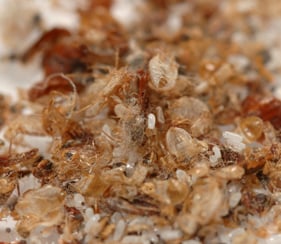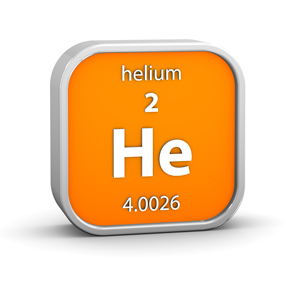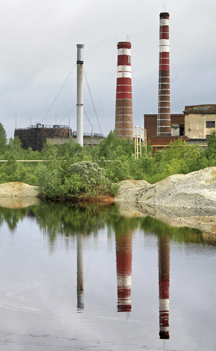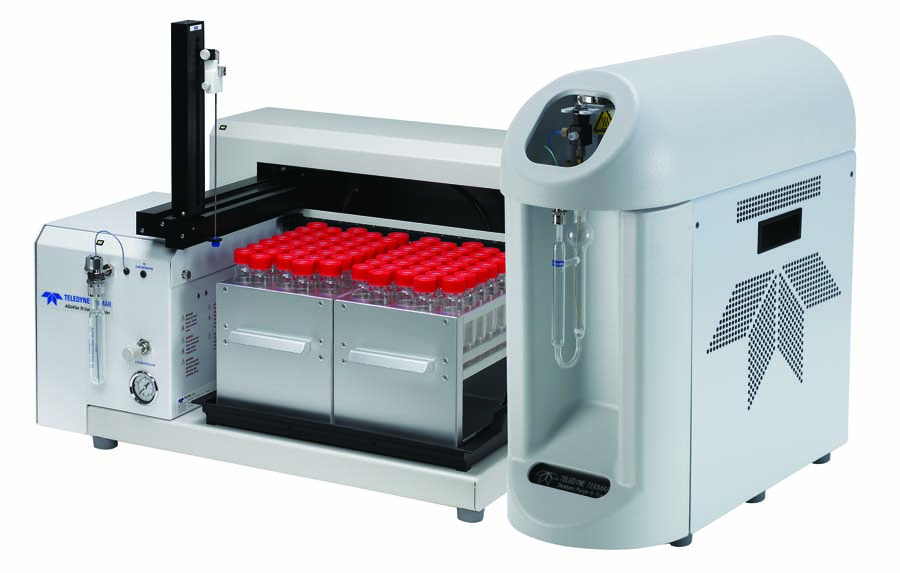Did you know that the petunia releases its fragrant compounds at night when pollinators are more likely to be out and about? Or that the rotting animal scent of the corpse flower comes from the same stuff that you smell in skunk beer and Limburger cheese? Scientists have also discovered the enzyme that gives roses its signature fragrance. Knowing this, rose breeders can use this knowledge to create even more potent smelling flower of love.
Tags: VOC
Avoid VOCs - Go Outside and Get SomeFresh Air
Posted by Betsey Seibel on Mon, Sep 28, 2015 @ 10:00 AM
Scientists in Edmonton, Alberta Canada wanted to find out where the air is better, inside or outside the home. The objective according to the study published in the August issue of Building and Environment “was to get a better understanding of emission sources of volatile organic compounds (VOCs) and their contributions to indoor and outdoor concentrations in residences in Edmonton.”[1] With all the concerns about air quality, one might think that the obvious answer is inside with the filtered air conditioning.
Tags: VOC
Mmmm… Bacon! The VOCs that make Bacon Smell So Good
Posted by Betsey Seibel on Wed, Jun 17, 2015 @ 11:30 AM
The UK-based Chemistry teacher behind Compound Interest, a blog that takes a closer look at the chemical compounds we come across every day, asked the question “Why does bacon smell so good?” He came across a study that “tried to discover the compounds that give frying bacon its aroma, by comparing it with the aromas released when cooking pork loin. They did this by frying the meat, mincing it, then passing nitrogen gas over it to collect any volatile organic compounds that were being released. The collected volatile compounds were then passed through a gas chromatograph and mass spectrometer in order for identification to be carried out.”
Tags: VOC
A 57-acre site along the Mohawk River near Schenectady, N.Y., is the future home of a new casino, hotels, apartments and shopping centers. Renderings of the project include elegant glass buildings and plush green lawns. Unfortunately, the site’s history of manufacturing train parts and turbine engines dating back to the 1800s has brought the construction project to a halt. The site is now in the middle of a multi-million dollar cleanup to remove a number of harmful substances, including arsenic, mercury, lead, petroleum byproducts and volatile organic compounds (VOCs). In Niskayuna, N.Y., a landfill on GE Global Research’s 525-acre campus contains more than 112 tons of hazardous waste, including VOCs. From the 1940s to the 1970s, metals, ash residue and VOCs were dumped in the landfill. State environmental agencies are recommending monitoring and excavating the site to prevent any further contamination.
Tags: VOC, Volatile Organic Compounds
A recent study published in the March 2015 issue of Air Quality, Atmosphere & Health, suggests that house cleaning products labeled as “organic,” non-toxic” and “all natural” may not be as green as they suggest. The study conducted by the University of Melbourne reviewed the ingredients of 37 different fragranced and fragrance-free air fresheners, cleaning products, laundry supplies and personal care products (i.e. soap, shampoo and sunscreen). Researches found 156 different volatile organic compounds emitted from the commonly used products; 42 of which are classified as toxic or hazardous. There was an average of 15 VOCs per product.
Using Chromatography to analyze Art and Bed Bugs
Posted by Betsey Seibel on Mon, Feb 23, 2015 @ 11:00 AM
Using Chromatography to analyze Art and Bed Bugs
Artists use eggs, glue and vegetable oils in their paints. Bed Bugs have three volatile compounds in their feces that have been combined to create a lure that makes them easier to catch; two completely different topics, and not exactly things that you read every day. They are however important to art conservationists and scientists, and we wouldn’t know about either if it weren’t for modern analytical techniques, including gas chromatography.
Tags: VOC, Volatile Organic Compounds
Is life on Mars possible… an age-old question that has yet to be completely answered? While current conditions indicate that the planet is inhospitable to life, scientists are now finding evidence that the planet once had a climate where life was possible. NASA Curiosity rover detected organic molecules as part of recent landing mission, but scientists are uncertain whether the molecules are the building blocks of life or created by a chemical reaction from water at ancient Martian hot springs or interplanetary dust from asteroids or comets.
Tags: VOC
In September, we hosted a webinar about using alternative gases for volatile organic compound (VOC) analysis. Helium is by far the choice carrier gas and is used for many purposes besides VOC analysis. Unfortunately, the price for helium has increased and shortages are being reported worldwide, this in spite of the fact that helium is the second most abundant element in the universe[1]. Since 2008, the price of helium has increased by a factor of 2.5 every year, and one scientist estimates that a party balloon could cost as much as $100 in the near future. Helium is used as a cooling source for semiconductor magnets, in MRI scanners, fiber optics and LCDs, for industrial leak detection and to make breathing easier for deep-sea divers.
Tags: VOC
Need to analyze VOC contaminating water sources in Danish Flats
Posted by Betsey Seibel on Mon, Oct 20, 2014 @ 09:52 AM
Within the Uintah Basin of Utah there are 15 evaporation pond farms that manage liquid waste. Recently, one of the facilities in Grand County, Utah, which receives wastewater from oil and gas mining in Colorado, was found to be operating without air-quality permits for the past six years. Since April 2008, the facility has released “tons of toxic chemicals” into the air. The company, Danish Flats Environmental Services, had also provided faulty data that did not accurately report the effectiveness of emission-control equipment on site. An analysis conducted by the states Division of Air Quality found that the site was a “major emission source for hazardous air pollutants and volatile organic compounds.” The company was subsequently fined $50,000 for its violations.
Tags: VOC, Volatile Organic Compounds, wastewater
Teledyne Tekmar Instruments Testing Cincinnati Water after West Virginia MCHM Leak
Posted by Jason Davis on Fri, Jan 17, 2014 @ 10:15 AM
When a NBC Nightly News story showed our instruments preparing water samples after the recent 4-methylcyclohexane methanol (MCHM) contamination of West Virginia drinking water, we felt like heroes, and yes, maybe a bit like parents. There was our very own Stratum Purge and Trap Concentrator and AQUATek 70 Vial Autosampler at work in Cincinnati’s Richard Miller Water Treatment Plant.
Tags: Purge and Trap Concentrator, VOC, Teledyne Tekmar, drinking water, AQUATek70, AQUATek100, Stratum









